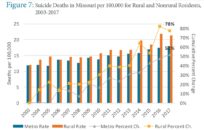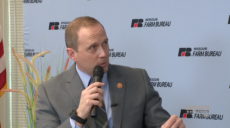JEFFERSON CITY, Mo. – State employees’ premiums and deductibles are shooting up, but it should come as little surprise.
During the previous legislative session, legislators learned that the Missouri Consolidated Health Care Plan – the health care for state workers – would have to raise premiums and deductibles. While working on the budget, Senate Appropriations chairman Dan Brown said that deductibles were expected to rise from $300 and $600 to $750 and $1,000 deductibles.
Upon learning that, it had seemed that a wrench had been thrown into the plans by the legislature to try and implement a pay raise for state workers, who have been securely listed as the lowest-paid state workers in the nation for some time.
“When we became aware that Missouri Consolidated was going to have to raise premiums almost double what the pay raise was going to be, in my mind, this was a lost deal,” Sen. Dan Brown explained back in early May. “So, we came up with a little over $16 million extra to put into Missouri Consolidated, and that’s going to keep the premium rate pretty level.”
That money, however, was only available by delaying the proposed pay raise, and Brown made it clear that it wasn’t going to prevent the health care plans from changing.
Brown had urged the legislature to allocate $61 million to keep those premiums as close to level as possible for the state workers, but lawmakers would have needed an additional $46 million to keep the deductibles from rising. By delaying the raises, the legislature hoped to shore up some money for MCHCP.
In a column published by the Jefferson City News Tribune, then-Senate Majority Leader Mike Kehoe explained the situation, saying that on learning of the need to increase money from MCHCP, they were left with two options: allow the MCHCP to pass these costs directly onto state employees through dramatically increased premiums, or increase funding by more than $61 million.
“Brown and I had numerous discussions about whether delaying raises and controlling MCHCP costs for state employees is the best course of action, and the numbers overwhelmingly reveal this to be the case,” he wrote. “Absent the state’s additional investment of $61.2 million, the average state employee, in the higher deductible plan with a spouse and child, would have seen an annual premium increase of approximately $1,200, consuming their pay raise, plus more. In the FY2019 budget, that same employee will see an increase of less than $50 and will still come out ahead even with their raise not going into effect until Jan. 1. I have fought for state employee pay raises throughout my time in the Senate; however, I also understand that a pay raise which is consumed by increased insurance costs is really no raise at all. I am grateful to Brown and the members of the committee for making difficult decisions to allow state employees to put more money into their pockets.”
According to Judith Muck, the executive director for MCHCP, they have been able to offer the same plan choices with no change to the active employees premium for seven years.
She says that as health care costs continue to rise each year, MCHCP used available trust fund dollars to pay for increased claim costs not covered by premium dollars and that as a result, it is time to make changes.
MCHCP will offer three medical plans in 2019 to active employees. MCHCP will continue to offer the HSA Plan with an annual health savings account contribution, a PPO 1250 Plan which will include office visit copayments, and a PPO 750 Plan.
Muck says MCHCP is able to offer these plans with only a slight increase in premiums for all levels of coverage and will still offer employee-only coverage in the HSA plan with a $0 premium if the employee takes advantage of the Strive for Wellness® incentives.
Muck provided some examples of monthly increases for Employee Only coverage plans – with all incentives:
- The HSA Plan will have a $0 monthly premium as compared to the $0 premium for this Plan in 2018. That is a $0 increase.
- The new PPO 1250 will have a $42 monthly premium compared to $41 for the PPO 600 Plan in 2018. That is a $1 increase.
- The new PPO 750 will have a $72 monthly premium compared to $70 for the PPO 300 in 2018. That is a $2 increase.
She said other coverage tiers will have differing amounts of a slight premium increase.
She also noted that over the past few years, only about one third of active members had enough claims to reach their deductible. She said that, therefore, most employees will not experience more out-of-pocket costs due to the plan changes.
The new costs were finalized by MCHCP this year, with the new plans’ deductibles and copays increasing starting on January 1, 2019.
Benjamin Peters was a reporter for The Missouri Times and Missouri Times Magazine and also produced the #MoLeg Podcast. He joined The Missouri Times in 2016 after working as a sports editor and TV news producer in mid-Missouri. Benjamin is a graduate of Missouri State University in Springfield.









